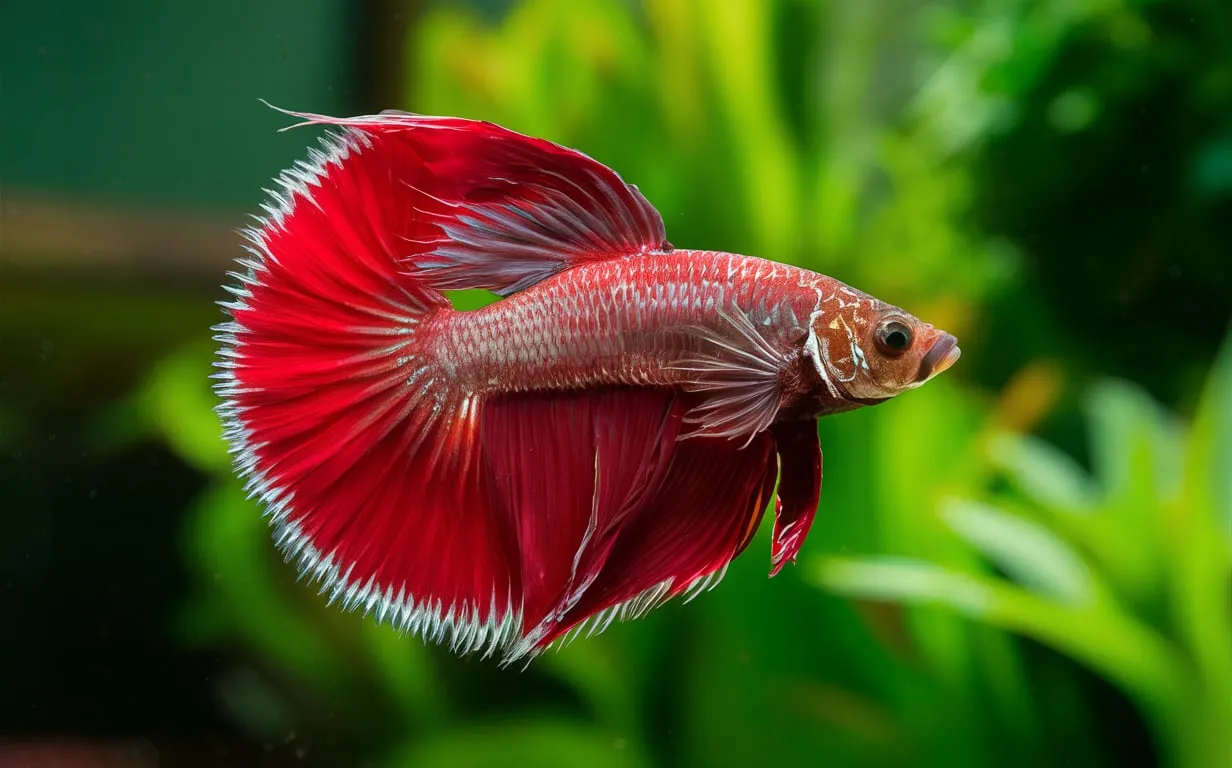If you’re a betta fish enthusiast, you’ve likely heard of the stunning and unique Samurai betta. These majestic creatures are taking the aquarium world by storm, captivating fish keepers with their striking appearance and fascinating behavior. In this comprehensive guide, Betta Fish Tips will dive deep into the world of Samurai bettas, exploring their origins, care requirements, and why they make such incredible additions to any aquarium.

What are Samurai Betta Fish?
Samurai bettas, also known as Plakat bettas, are a unique variety of the popular Siamese fighting fish (Betta splendens). Unlike their long-finned counterparts, Samurai bettas have significantly shorter, more compact fins that give them a sleek, streamlined appearance. This distinctive look is achieved through selective breeding, which has resulted in a fish that is both visually stunning and well-suited for active tank environments.
Origins and Appearance of Samurai Bettas
Samurai bettas originated in Thailand, where they were selectively bred to have shorter fins and more robust bodies. This unique appearance is the result of a genetic mutation that was then propagated by breeders to create the Samurai betta we know and love today.
These fish are characterized by their vibrant colors, which can range from stunning metallic hues to deep, rich tones. Samurai bettas often display a mix of colors, with intricate patterns and iridescent scales that catch the light and make them truly mesmerizing to behold.
Samurai Betta Fin Types
In addition to their iconic appearance, Samurai bettas are also distinguished by their fin types. The most common varieties include:
- Half Moon Samurai: These bettas have a distinctive half-moon shaped caudal (tail) fin that can span up to 180 degrees.
- Plakat Samurai: Plakat Samurai bettas have short, rounded fins that give them a more streamlined, athletic look.
- Delta Tail Samurai: Delta Tail Samurai bettas have a triangular-shaped caudal fin that can reach up to 180 degrees in spread.
Caring for Samurai Betta Fish
Samurai bettas, like all betta fish, have specific care requirements that must be met to ensure their health and longevity. Here are some key considerations:
Tank Size and Setup
Samurai bettas should be housed in a tank of at least 2.5 gallons, though a 5-gallon or larger tank is ideal. The tank should be well-filtered, with a gentle water flow and plenty of live plants or other hiding spots for the betta to explore.
Water Parameters
Samurai bettas thrive in warm, slightly acidic water with a pH between 6.0 and 7.0. The water temperature should be maintained between 78-82°F (25-28°C). Consistent water quality and regular partial water changes are essential for these fish.
Diet and Feeding
Samurai bettas are carnivorous and should be fed a varied diet of high-quality betta pellets, freeze-dried or frozen bloodworms, and other nutrient-rich foods. It’s important to avoid overfeeding, as this can lead to health issues.
Tankmates
Samurai bettas are generally peaceful and can be housed with compatible tank mates, such as small, peaceful community fish. However, it’s important to avoid housing multiple male Samurai bettas together, as they are known to be territorial and may engage in aggressive behaviors.
What are the common health issues faced by Samurai betta fish?
Samurai betta fish, also known as Plakat bettas, can face several common health issues. Here are some of the main health concerns for this type of betta fish:
- Fin and Tail Rot: Samurai bettas are prone to developing fin and tail rot, a bacterial infection that can cause the fins and tail to deteriorate. This can be caused by poor water quality, stress, or injuries.
- Swim Bladder Disorder: Samurai bettas may experience swim bladder issues, which can cause buoyancy problems and difficulty swimming. This can be caused by overfeeding, constipation, or other underlying health conditions.
- Ich (White Spot Disease): Ich is a common parasite that can affect Samurai bettas, causing white spots on the body and fins. If left untreated, it can be fatal.
- Fungal Infections: Samurai bettas may be susceptible to various fungal infections, such as cotton wool disease, which can cause fluffy white growths on the body.
- Stress-Related Illnesses: Samurai bettas are sensitive to their environment and can develop stress-related health issues, such as lethargy, loss of appetite, and susceptibility to diseases.
To maintain the health of Samurai betta fish, it is essential to provide them with a clean, well-cycled aquarium, a balanced diet, and stable water parameters. Regular water changes, proper tank setup, and vigilance for any signs of disease are crucial for keeping these beautiful fish healthy.
Conclution
Samurai bettas are undoubtedly some of the most striking and captivating fish in the aquarium hobby. Their unique appearance, vibrant colors, and intriguing behavior make them a true joy to keep and observe. Whether you’re a seasoned betta enthusiast or a newcomer to the hobby, the Samurai betta is sure to capture your heart and imagination.

Bài viết liên quan
Understanding Betta Fish Changing Color
Betta fish, often referred to as Siamese fighting fish, are known for their vibrant and [...]
Jul
Understanding The Unique Traits Of Purple Betta Fish
Betta fish, also known as Siamese fighting fish, have long been a popular choice among [...]
Jul
Introducing The Galaxy Betta Fish
Betta fish, also known as Siamese fighting fish, are a beloved and intriguing addition to [...]
Jul